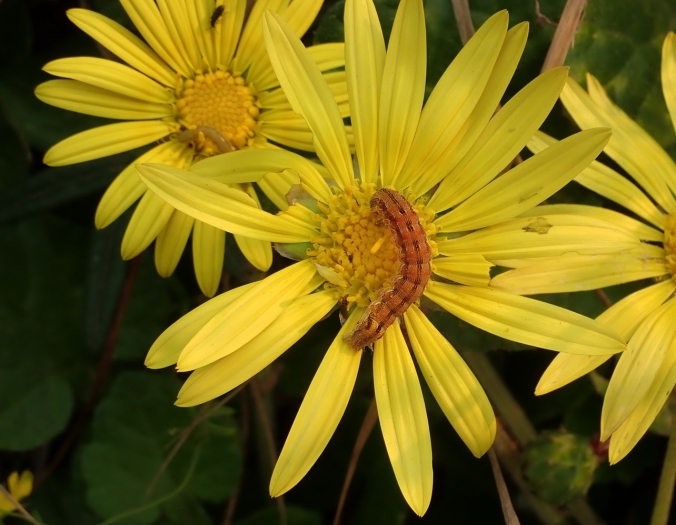Prostrate Cape Weed
(Arctotheca prostrata)
Prostrate Cape Weed (Arctotheca prostrata)
/
/

Nicola van Berkel
CC BY-SA 4.0
Image By:
Nicola van Berkel
Recorded By:
Copyright:
CC BY-SA 4.0
Copyright Notice:
Photo by: Nicola van Berkel | License Type: CC BY-SA 4.0 | License URL: http://creativecommons.org/licenses/by-sa/4.0/ | Rights Holder: Nicola van Berkel | Publisher: iNaturalist | Date Created: 2018-10-29T09:14:18-07:00 |




















































Estimated Native Range
Summary
Arctotheca prostrata, commonly known as Prostrate Cape Weed, is a perennial herb that is often treated as an annual in cultivation. It is native to coastal dunes and sandy soils in South Africa. This low-growing plant typically reaches a height of 0.3-0.9 feet (0.09-0.3 meters) and spreads out to 0.4-0.8 feet (0.1-0.2 meters), forming a dense mat of foliage. The leaves are deeply lobed, silver-green in color, and covered with fine hairs, giving them a soft texture. Prostrate Cape Weed produces daisy-like yellow flowers with a dark center throughout the spring, summer, and fall, which are moderately showy and attract pollinators.
This plant is valued for its drought tolerance and ability to stabilize sandy soils, making it useful for ground cover in coastal gardens and restoration projects. It is also used to suppress weeds in cultivated areas. Prostrate Cape Weed thrives in full sun to part shade and prefers well-drained soils with low water requirements once established. However, it can become invasive outside its native range, particularly in Mediterranean climates like California, and should be planted with caution.CC BY-SA 4.0
This plant is valued for its drought tolerance and ability to stabilize sandy soils, making it useful for ground cover in coastal gardens and restoration projects. It is also used to suppress weeds in cultivated areas. Prostrate Cape Weed thrives in full sun to part shade and prefers well-drained soils with low water requirements once established. However, it can become invasive outside its native range, particularly in Mediterranean climates like California, and should be planted with caution.CC BY-SA 4.0
Plant Description
- Plant Type: Herb
- Height: 0.3-0.9 feet
- Width: 0.4-0.8 feet
- Growth Rate: Moderate
- Flower Color: Yellow
- Flowering Season: Spring, Summer, Fall
- Leaf Retention: Deciduous
Growth Requirements
- Sun: Full Sun, Part Shade
- Water: Low
- Drainage: Medium
Common Uses
Drought Tolerant, Low Maintenance
Natural Habitat
native to coastal dunes and sandy soils in South Africa
Other Names
Common Names: Creeping Bear’s-Ear, Cape Dandelion, Cape Gold
Scientific Names: , Arctotheca prostrata, Arctotheca repens, Arctotis repens, Arctotheca grandiflora, Arctotheca hirta, Arctotis interrupta, Arctotis prostrata,
GBIF Accepted Name: Arctotheca prostrata (Salisb.) Britten